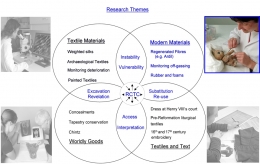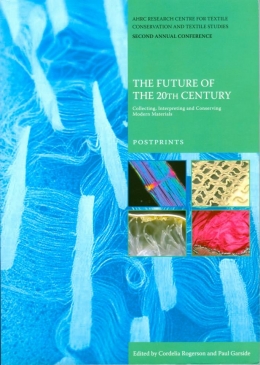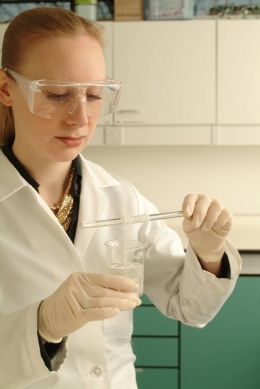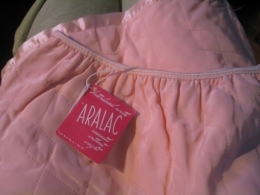Modern Materials
Many museums and historic house collections ocontain 'modern materials', such as early plastic costume accessories or foam-filled upholstery. These materials present major conservation challenges, as explored below.
- Identifying and characterising textiles made from regenerated protein fibres derived from plants. Many attempts have been made to create substitutes for wool and silk from plant materials, both in the UK and USA. The presence of these textiles in museum collections often goes unrecognised. This lack of recognition has implications for both preventive conservation and curation, as this important development in the history and technology of textiles is often ignored. Current concern about the environment has lent this research greater salience, as such plant-derived fibres could form environmentally preferable substitutes to both animal-derived and petroleum derived products.
- Developing simple means of in situ monitoring of the off-gassing of garments and costume accessories made with Cellulose Nitrate (CN; widely marketed under its American trade name ‘Celluloid’) and/or Cellulose Acetate (CA). CN and CA were often employed as substitutes for more expensive natural products, such as amber, tortoiseshell and horn, and were widely used in the early 20thC in costume accessories. Components made from CN and CA can be very hard to distinguish from the natural materials they emulated; they also degrade very quickly, emitting harmful by-products. Identifying these materials before they begin to deteriorate improves preventive conservation measures. If the presence of these materials isidentified, measures can be taken to detect the first signs of deterioration and to slow down that degradation. Preventive conservation measures can also be taken to protect artefacts stored and displayed nearby, which otherwise would be damaged by the acids emitted by CN and CA as they degrade.




